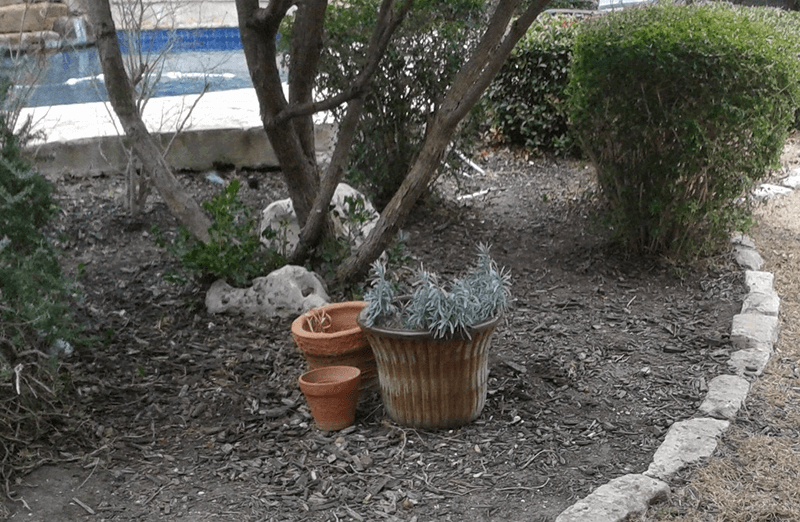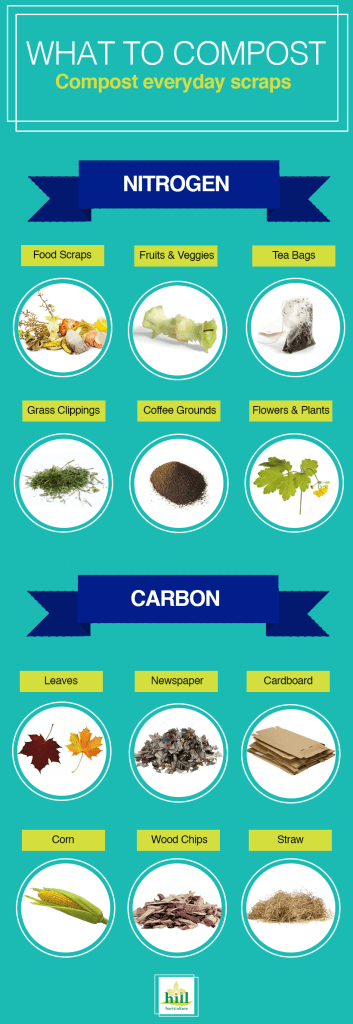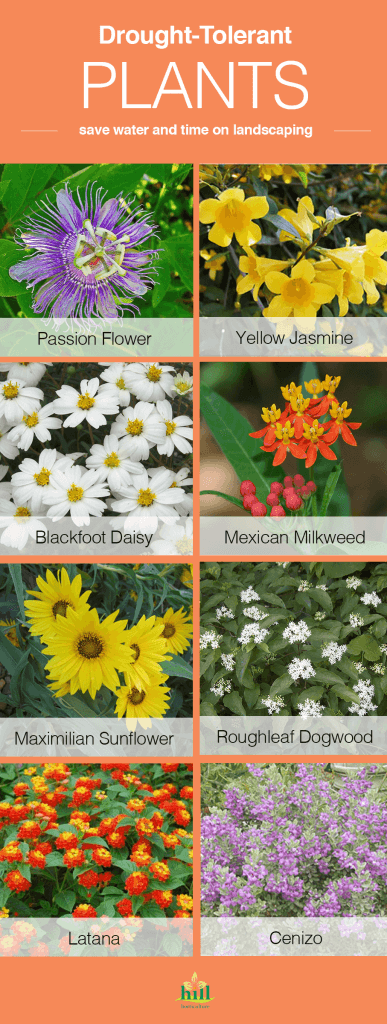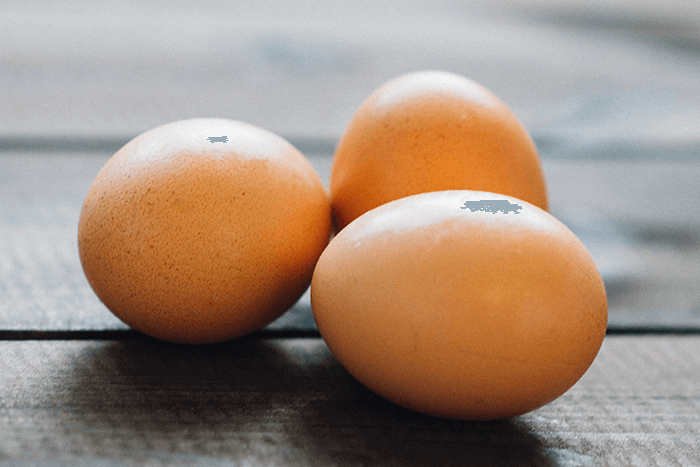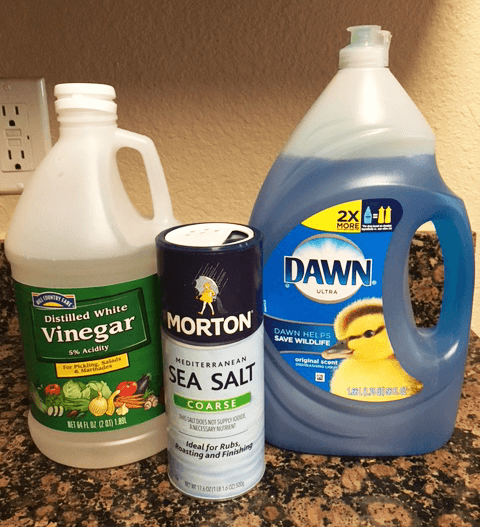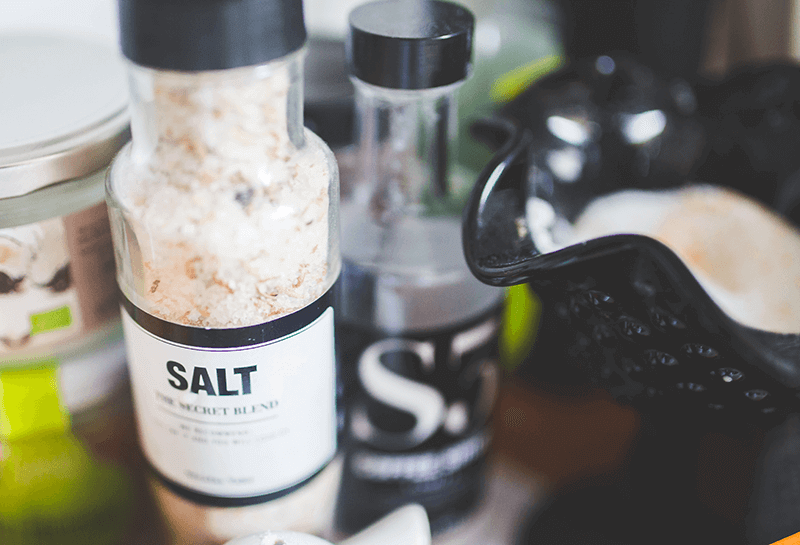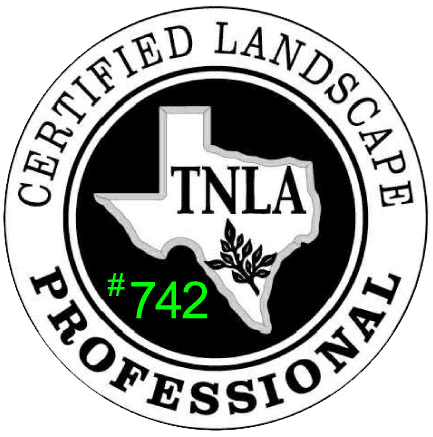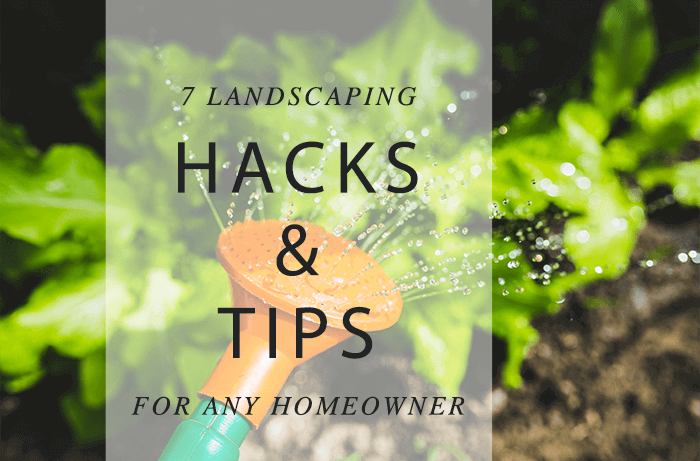
We all know that keeping up with your yard can take a toll on your wallet and time, so we wanted to share our favorite landscaping “hacks” to help you make your yard look like a million bucks without spending a million bucks. These useful tips can help any homeowner, new or veteran, create a better-looking landscape design for less.
Hack #1: Test your soil
The most important part of starting a landscaping project, especially in San Antonio where the majority of the soil is clay, is testing your soil type and pH level. This helps you understand and fix any pH problems with your soil and lets you know which types of plants and flowers will grow best in your yard. This can reduce your maintenance time and the cost of the fertilizers you use throughout the year.
Use a pH strip to test your soil, or perform this simple, three-step science experiment at home to figure out your soil’s pH:
- Step 1: Get two samples of soil from your yard. Put each sample into a separate glass jar or other glass container.
- Step 2: In one glass, add ½ cup of vinegar and wait for a reaction. If there is a reaction your soil is alkaline. If you don’t see a reaction, move onto Step 3, and the second jar.
- Step 3: Add purified water to the second sample until the soil is a muddy texture. Then add ½ cup of baking soda and wait for a reaction. If it fizzes you most likely have acidic soil. However, if you still see no reaction, the pH of your soil is neutral – the ideal pH for plants.
There are a few other home tests your can use to test the pH level of your soil. If you are in San Antonio, you most likely have clay soil but it never hurts to test it just in case you get lucky!
Hack #2: Make your own compost
This is probably one of our favorite tips because it is so easy and crucial to a great looking yard in San Antonio, where the soil is lacking in nutrients. You can even use your compost as homemade mulch for your lawn, during the summer months, when rain is scarce.
Here are some materials you can save to make compost in everyday homes
- table scraps (no meat or bones)
- fruits and vegetable peels and scraps (especially bananas)
- eggshells
- leaves
- tea bags
- grass clippings
- coffee grounds
- scrap plants and flowers (no perennial weeds)
- newspaper
- cardboard
- corn
- straw
- wood chips
Two of the best materials to use in your compost are coffee grounds and bananas. Coffee grounds attract earthworms which help aerate the compost, balance pH levels, and improve the water retention of your compost. You can also use coffee grounds to get rid of slugs and snails. Bananas benefit your compost because they carry a high number of nutrients but also keep away aphids and garden pests that hate bananas. For best results, chop up your banana peels so they don’t attract rodents.
Hack #3: Use LED lighting
A major part of landscape design is lighting. The right lighting adds dimension to your landscape, shows off your lawn at night, and acts as security. It can also add a pretty penny to your electricity bill. For this reason, we always recommend installing LED lighting for all landscape lighting. LED lights use only about a fourth of the energy of traditional lights and last 25 times longer. LED lights are more expensive up front but save you money and maintenance in the long-run. We also recommend setting up sensor lighting for any security lighting so you can conserve energy by not leaving lights on all night.
Hack #4: Opt for water free landscaping:
Watering a yard can be one of the most expensive yard upkeeps. Have you ever considered alternative plants that require little watering? Drought-tolerant plants are a great way to save money on a water bill and give a vibrant and interesting landscape design to any home. Another way to save water on your yard is to install artificial grass in your lawn or in small areas of your yard. Artificial grass requires no water except to cool down the lawn and gives you other benefits like no maintenance, a green yard all year round, and long-term cost savings.
Hack #5: Use eggs in your yard
Eggs are miracle workers when it comes to yard care. They are so rich in protein, vitamins, and minerals so they make the perfect fertilizer. So before you throw away your eggshells here a few ways to make the most of them in your yard.
- Compost: add the eggshells to your DIY compost you learned above. They are a great addition and will make the most of your compost
- Get rid of pests: you can sprinkle eggshells around your yard where you are having trouble with snails and slugs. Their sharp edges make it difficult for these pests to get to your garden.
- Water plants: if you boil eggs save the water. The water will contain calcium which is great for plants.
- Fertilizer: if you aren’t making compost, just using the eggshells is a great fertilizer for plants. Just scatter the eggshells near plants and mix in a little with soil.
Hack #6: DIY your weed killer
Most weed killers you can buy in the store have toxins that aren’t safe to have around your children and pets. Making your own weed killer with a few simple products you most likely already have around the house will save you money and keep your yard safe for any pets and kids. All you need is:
- 1 Gallon of Vinegar
- 1 Cup of Salt (it doesn’t matter which type of salt you use, but we prefer sea salt)
- 1 Tbsp. Dawn soap (preferably the original without any added scents)
Mix all three ingredients together and put into a garden sprayer. There you have it an easy and safer weed killer for your yard.
Hack #7: Add Epsom salt to your yard:
Another powerful household item is Epsom salt because it contains so many great minerals, including magnesium. You can add Epsom salt into garden beds or to your lawn to help increase nutrients and improve plant growth. If you see your lawn starting to turn yellow it is usually an indication that it’s not getting enough magnesium. This is the perfect time to use Epsom salt. Your yard can never have enough magnesium, so you can’t pour too much. You can also use it to prevent slugs and pests from getting to your garden.
These tips can help you keep your yard beautiful while saving you time, money, and stress.

